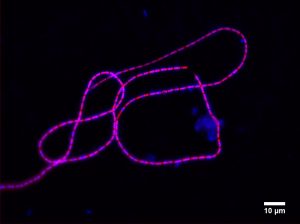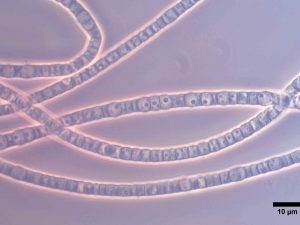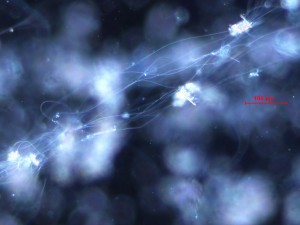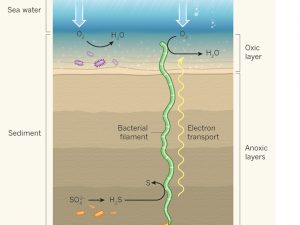
Figure 1. Epifluorescence image of a cable bacterium filament. The filament is stained with a particular probe that exclusively tags the DNA of cable bacteria. (Silvia Hidalgo Martinez, University of Antwerp)
A new way of life...
The process of long-distance electron transport in cable bacteria therefore overturns some long-standing ideas in biology about energy metabolism and cellular interactions. Until now, the rule in biology is that each living cell secures its own biochemical energy supply, which is done by processing electron donors and electron acceptors that are immediately available within the local environment of the cell. This rule holds for all organisms, from single celled bacteria to multicellular elephants. This is the reason why we and other animals have such an elaborate circular system: our bloodstream needs to supply oxygen (electron acceptor) and sugars (electron donor) to each cell within our body.
Cable bacteria do not fit this archetypal model of cellular metabolism, as all cells are cooperating to ensure the energy supply to the organism, thereby using electrical currents. The energy production no longer occurs in individual cells, but is entirely cooperative. Such an electrical interaction between cells has not been seen before, and therefore, some microbiologists even call it a new form of life.




